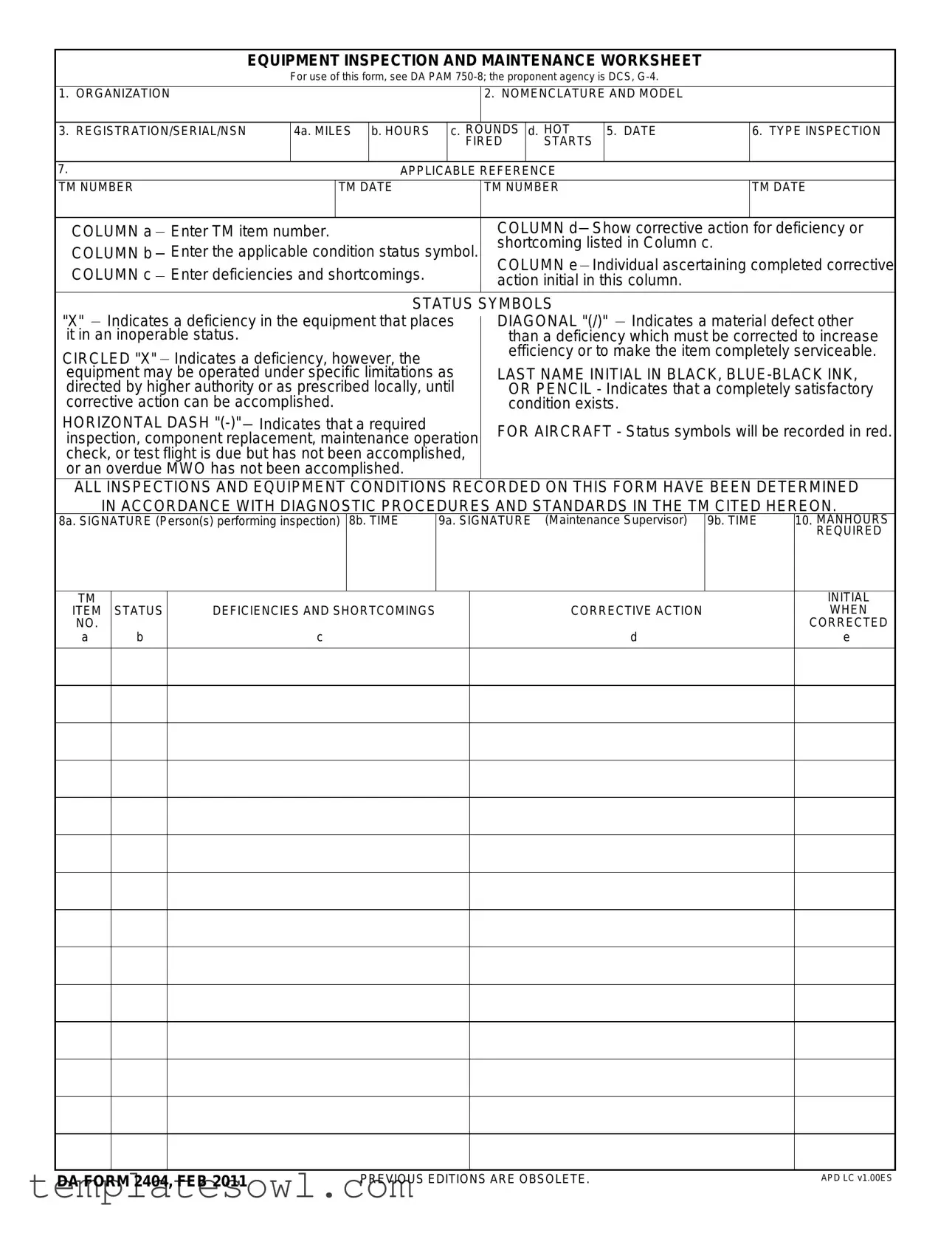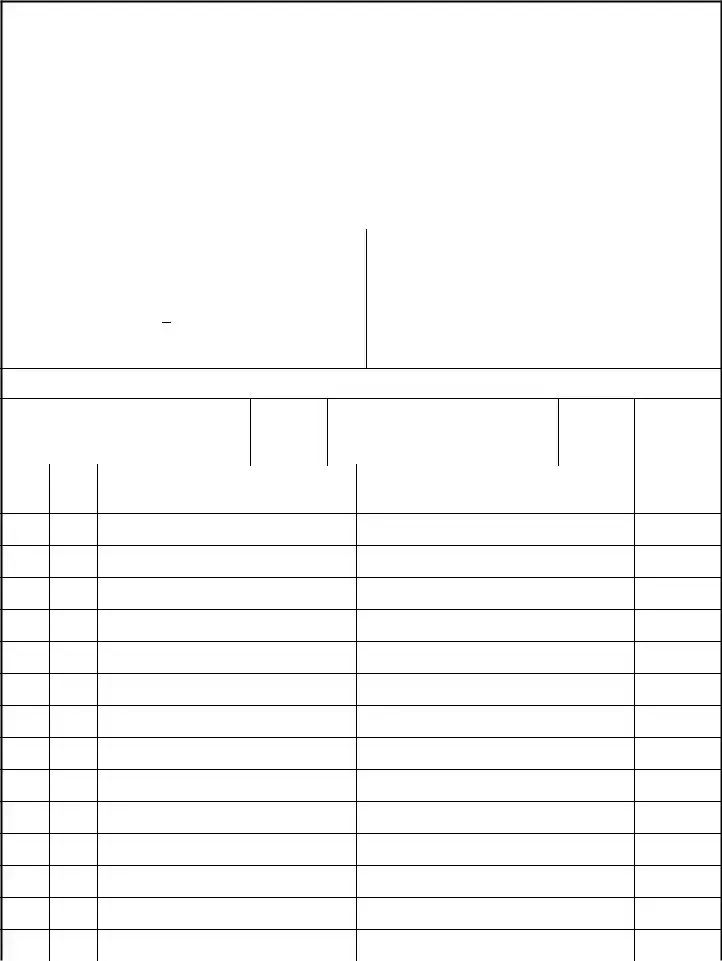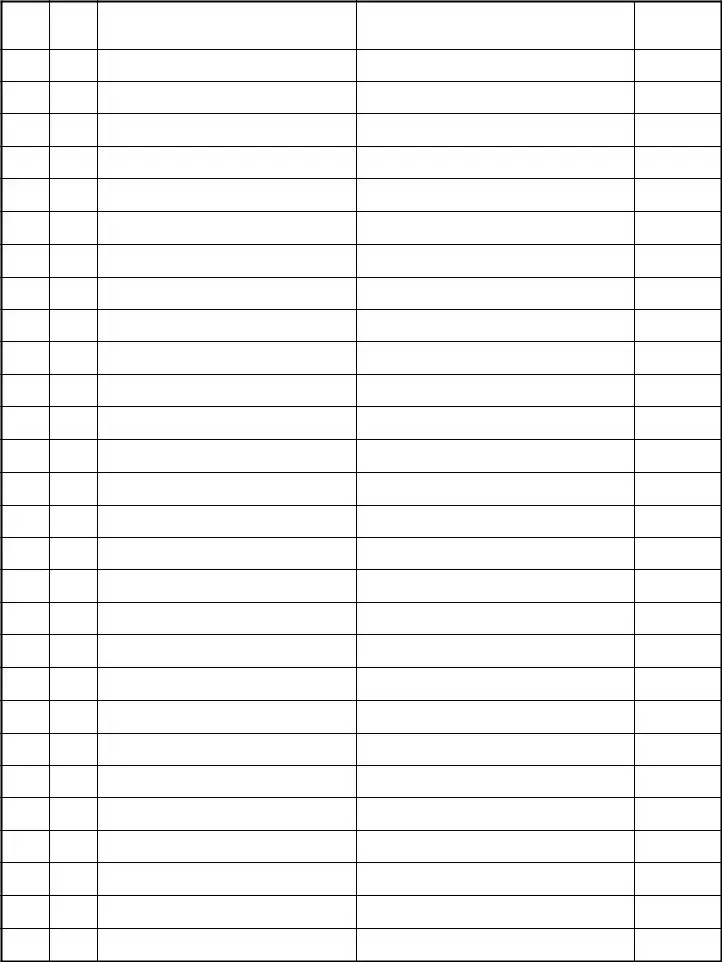FOR AIRCRAFT - Status symbols will be recorded in red.
EQUIPMENT INSPECTION AND MAINTENANCE WORKSHEET
For use of this form, see DA PAM 750-8; the proponent agency is DCS, G-4.
|
1. ORGANIZATION |
|
|
|
|
|
2. NOMENCLATURE AND MODEL |
|
|
|
|
|
|
|
|
|
|
|
|
|
|
|
|
|
|
|
|
|
|
|
|
3. REGISTRATION/SERIAL/NSN |
4a. MILES |
b. HOURS |
c. FIREDROUNDS |
d. STARTSHOT |
5. DATE |
6. TYPE INSPECTION |
|
|
|
|
|
|
|
|
|
|
|
|
|
|
|
|
|
|
|
|
|
|
|
7. |
|
|
|
|
|
|
|
|
|
APPLICABLE REFERENCE |
|
|
|
|
|
TM NUMBER |
|
|
TM DATE |
TM NUMBER |
|
|
|
TM DATE |
|
|
|
|
|
|
|
|
|
|
|
|
|
|
|
|
|
|
COLUMN a |
|
Enter TM item number. |
COLUMN d |
|
Show corrective action for deficiency or |
|
|
|
|
|
|
|
COLUMN b |
|
|
|
|
Enter the applicable condition status symbol. |
shortcoming listed in Column c. |
|
|
|
|
COLUMN e |
|
|
Individual ascertaining completed corrective |
|
COLUMN c |
|
|
Enter deficiencies and shortcomings. |
|
|
|
|
|
|
|
|
|
action initial in this column. |
|
|
|
|
|
|
|
|
|
|
|
|
|
|
|
|
|
|
|
|
|
|
|
|
|
|
|
|
|
STATUS SYMBOLS |
|
|
|
|
|
"X" |
|
Indicates a deficiency in the equipment that places |
DIAGONAL "(/)" |
|
Indicates a material defect other |
|
|
|
|
it in an inoperable status. |
|
|
|
|
than a deficiency which must be corrected to increase |
|
CIRCLED "X" |
|
|
|
Indicates a deficiency, however, the |
efficiency or to make the item completely serviceable. |
|
|
|
|
equipment may be operated under specific limitations as |
LAST NAME INITIAL IN BLACK, BLUE-BLACK INK, |
|
directed by higher authority or as prescribed locally, until |
OR PENCIL - Indicates that a completely satisfactory |
|
corrective action can be accomplished. |
condition exists. |
|
HORIZONTAL DASH "(-)" Indicates that a required inspection, component replacement, maintenance operation check, or test flight is due but has not been accomplished, or an overdue MWO has not been accomplished.
ALL INSPECTIONS AND EQUIPMENT CONDITIONS RECORDED ON THIS FORM HAVE BEEN DETERMINED IN ACCORDANCE WITH DIAGNOSTIC PROCEDURES AND STANDARDS IN THE TM CITED HEREON.
8a. SIGNATURE (Person(s) performing inspection) 8b. TIME 9a. SIGNATURE (Maintenance Supervisor) 9b. TIME 10. MANHOURS REQUIRED
TM |
|
|
|
INITIAL |
ITEM |
STATUS |
DEFICIENCIES AND SHORTCOMINGS |
CORRECTIVE ACTION |
WHEN |
NO. |
|
|
|
CORRECTED |
a |
b |
c |
d |
e |
DA FORM 2404, FEB 2011 |
PREVIOUS EDITIONS ARE OBSOLETE. |
APD LC v1.00ES |
|
|


